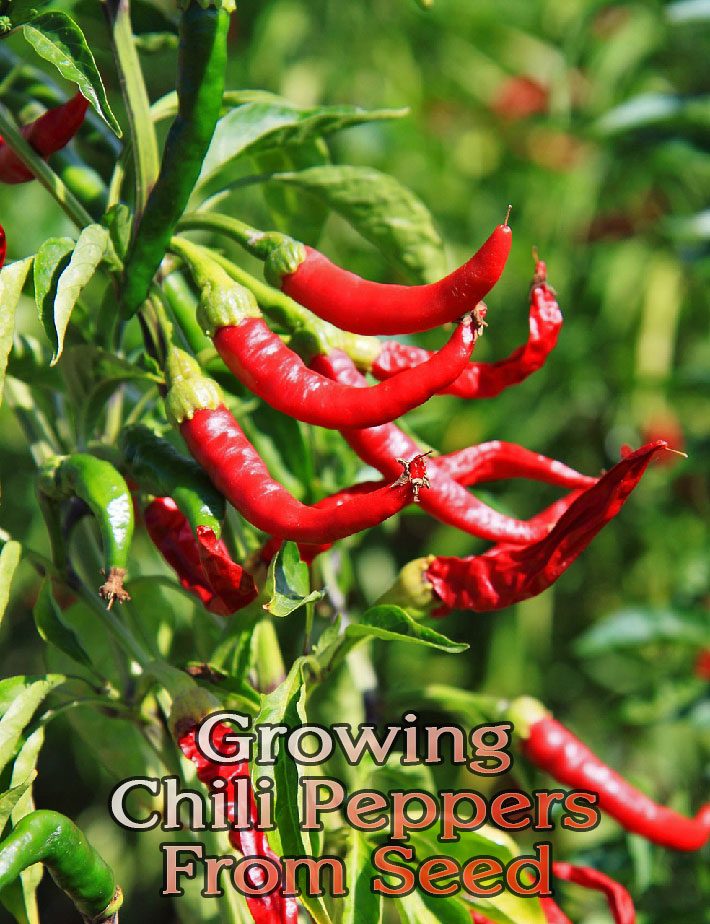
Everybody needs to grow chili peppers for cooking. Even if you don’t like hot food, just a little hint of chili to warm it up stimulates the taste buds and everything else tastes just so much better. True. And chilies will brighten up your garden!
There are different species of chili peppers. Most chilies are grown as annuals even though they can live for a few years in warm climates.
Some chili varieties are true perennials. Most of the common varieties belong to the species capsicum annuum, the “annual” species. (Bell peppers, called capsicums in Australia, also belong to the species capsicum annuum.)
Chilies have small to medium sized, shiny, dark green leaves. The fruit, the chili peppers, vary wildly in size and shape. Chili peppers are green to start with. Most of them ripen to a rich red, but they can also be orange, yellow, purple or brown.
They may hang down or stand up like little colorful candles. There are even ornamental varieties that are mottled and freckled. The different chili types not only vary in size and color, they also vary in how hot they are! If you grow chilies for the kitchen, choose your variety with care…
Where can you grow chili peppers?
Chili plants love heat. They are closely related to capsicums/bell peppers and also related to tomatoes (they are in the same family, the solanaceae), but chilies prefer their growing conditions a lot hotter.
Chili seeds need 20°C to germinate, and it should be 30°C or more for the fruit to ripen. Night temperatures should not drop below 15°C. (At least not on a regular basis. The odd cool spell is ok.) Chilies also don’t mind humidity as much as sweet peppers or tomatoes do.
Most people will need to grow chilies in full sun. In the hottest, sunniest regions they still grow well with a bit of shade. Especially afternoon shade can even be beneficial. (The fruit can get sunburned.) If you live in the tropics or subtropics, great. Your chilies should thrive. Even the “annual” varieties should live for two to three years and they produce fruit all year round.
If your climate is not tropical, don’t despair. You can still grow chilies if you get decent summers. And you can extend the growing season by growing them indoors, just like you do with tomatoes.
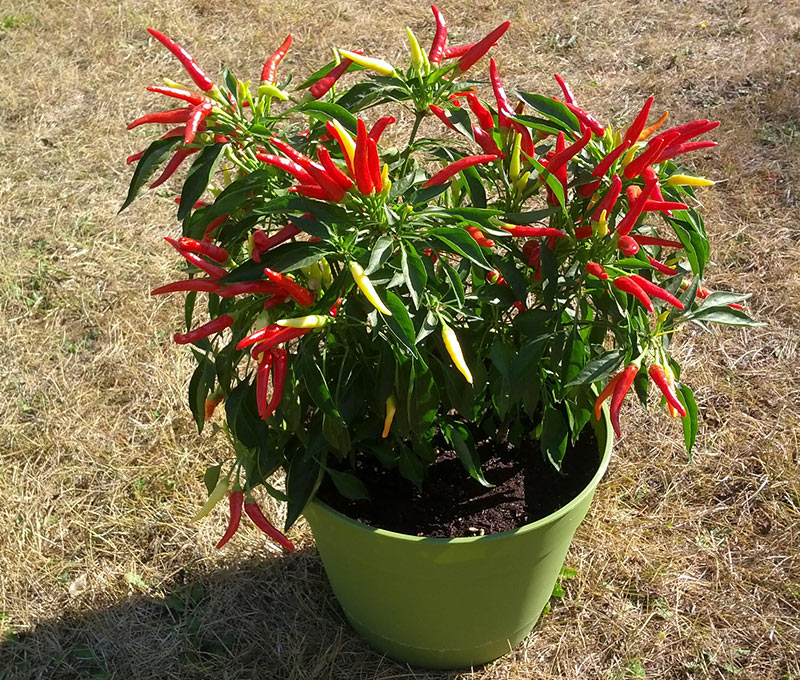
In fact, chilies are also related to tomatoes, so the growing methods and requirements are similar. Except that chilies need more heat. People with small gardens or balconies will be pleased to hear that you can grow chilies in pots.
How to grow chilies from seed
You can buy chili plants in a nursery or you can grow chilies from seed. The seed needs at least 20°C to germinate.
Start them in early spring in cooler climates or any time during the dry season. (You could start them all year round in the tropics, but it’s a good idea to let the plants grow strong before the wet season hits them.)
Chili plants are usually started in seedling trays or small pots. They are very vulnerable when small and they don’t grow all that fast. Still, I prefer to start mine directly in the ground, because like capsicums chilies don’t like being transplanted.
Actually, I only start them in the ground when I have enough seed to allow for a high percentage of fatalities. (I am the laziest gardener I know, so I don’t look after my seedlings much.) I usually have enough because I save my own seed.

You can plant several chili seeds per pot. Once your seedlings have a few leaves, snip off the weaker ones and only keep the strongest plants. You only want one chili plant per pot when you plant them out. Otherwise you will disturb their roots too much and they HATE having their roots disturbed.
If you grow chilies in seedling trays or little punnets, plant them out once they have four to six true leaves (about 5 cm tall). If you don’t, their roots will start feeling restricted and it will set them back. Chilies don’t mind growing in bigger pots, so the timing for planting them out is not critical if you use pots. If you live in a cooler climate, use pots. Let them to grow to 10 to 15 cm. Make sure it’s warm enough before you put them outside!
Water the chilies before transplanting, so the soil doesn’t fall apart when they’re removed from the pot. Be VERY careful when removing the seedlings from their pots. Drop them in a hole in the garden, fill it back in, firm down the soil, water, done.
Growing chili plants
Chilies grow in a variety of soils. Like most plants they grow better in rich soils and produce more fruit, but they will grow in any reasonably fertile soil and don’t need any special treatment. If you use plenty of mulch and compost in your garden the chilies will grow just fine.
If your soil is poor, you’ll have to fertilize them. (And start using more mulch and compost…) When fertilizing chilies keep in mind that, like their relatives and indeed most fruiting plants, chilies like potassium. Too much nitrogen will make them grow lots of soft leaves and no fruit.
It is important to keep your chili plants well watered and mulched. Mulch not only improves soil over time, it also protects it from drying out.
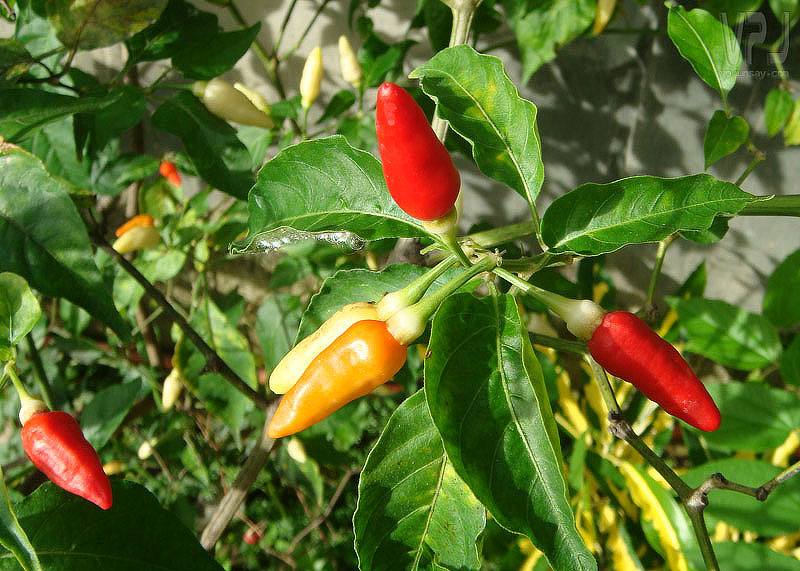
Chilies have such a tough and hardy image, people often don’t realize how sensitive they are when it comes to lack of water. Make sure they have plenty of water and never dry out. At the same time, don’t overwater. The soil should be free draining. Chilies don’t grow in swamps.
Problems when growing chilies
Chilies have weak branches. If they are loaded with fruit they can snap off. The whole plants are prone to branches drooping on the ground and breaking off, so you may want to give them some support. (I don’t. I just cut off the broken branches and the bush grows new ones. Chilies don’t mind if you prune them.)
A stake will also prevent the whole plant from toppling over, which also happens because their roots are only shallow and not very strong.
Root know nematodes can cause the plant to wilt and die for no obvious reason. However, root knot nematodes are a sign of very poor soils. If you add lots of compost and mulch to your garden you shouldn’t have any trouble. Other than that chilies grow happily and aren’t bothered much by any pests or diseases. If they struggle it’s usually a sign that the soil is not as fertile as you thought.
Did I mention that compost and mulch is great stuff?
Harvesting chili peppers
Chilies are quick to fruit and flower. How quick depends on the variety and on the temperature. You can harvest the first chilies green once they reach full size. Or you wait until they turn red, or whatever color they are supposed to turn.
If you plan to dry them for chili powder or flakes, you can even leave them on the bush until they shrivel up and dry.
To harvest fresh chili peppers, cut or pull off the mature fruit while it’s still shiny and plump. If you pull it off, pull it upwards, exactly opposite to the direction in which it bends down. Then it should snap off at the joint, without breaking off the whole branch. Otherwise just snip them off.
Chili Peppers will last in a sealed bag in the fridge for up to a week.
You can dry it in the dryer or sun dry it, you could also just string it up and hang it up to dry in an airy spot. Pound it to flakes or put it in the blender to make cayenne pepper and chili powder.

A word of warning
You don’t need to eat chilies for them to burn you! Just wait till you get Habanero chili juice under your fingernails for the first time…
When cutting fresh chili peppers, make sure to scrub your hands well after. Don’t touch your skin and especially don’t touch your eyes! The hottest chilies can make you go blind. I am not kidding. When working with dry chili be VERY careful not to breathe in any powder. Also don’t get it in your eyes.
Related: Bell Peppers – Growing Guide

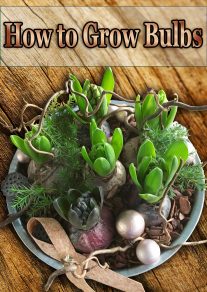
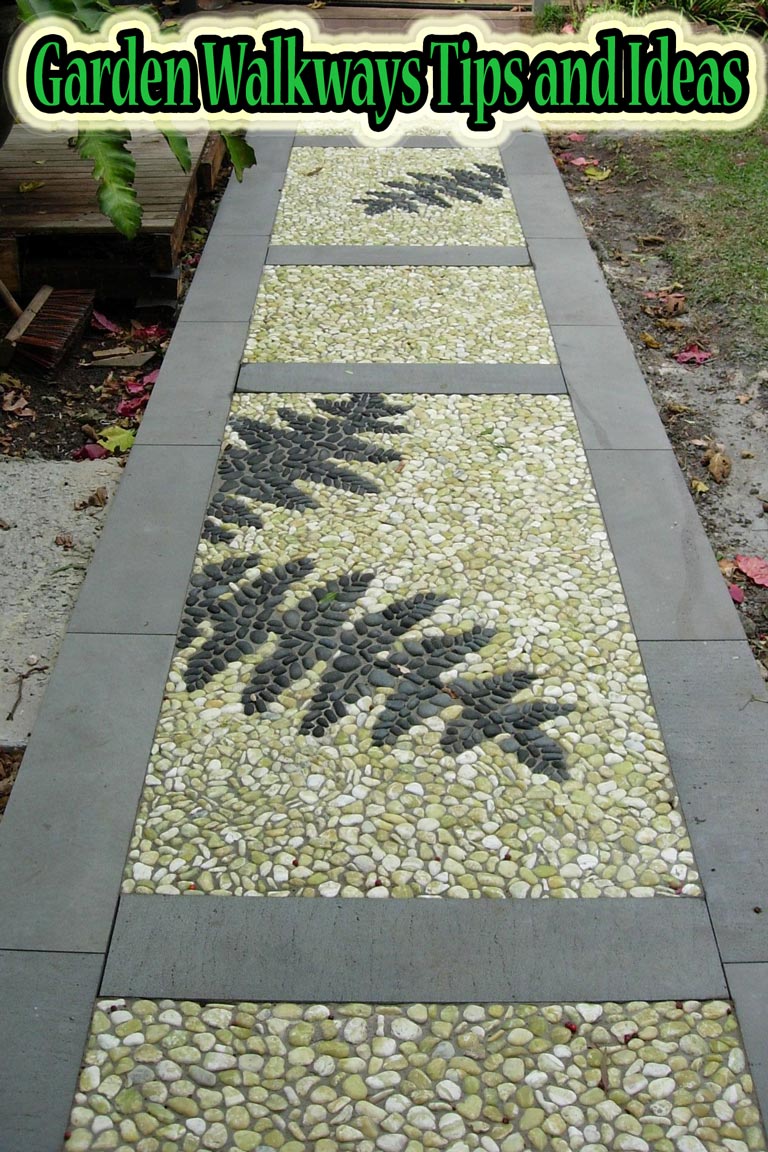
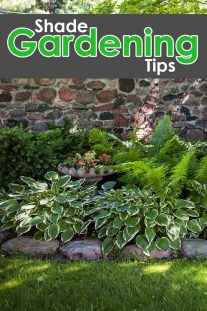
Leave a Reply